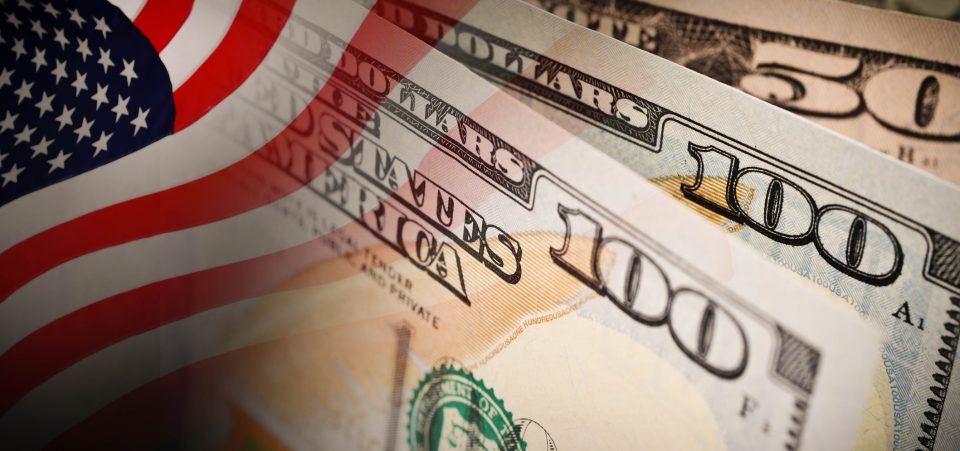U.S. Dollar Future and Predictions
It’s unclear what role the U.S. dollar plays in President Donald Trump’s script to “make America great again.” A strong dollar is a symbol of U.S. prestige and it sustains the American consumer economy. Amazon.com, Inc. (NASDAQ:AMZN) would certainly appreciate it.
Its millions of customers, buoyed by a greater perception (even if the reality might be different) of the tax cuts, would enjoy even greater purchasing power. But U.S. dollar index news tells a different story, which should cause you, and Trump, to be concerned.
In many ways, a high dollar allows the United States to maintain better social cohesion. Shopping, despite the dangers of its excess, keeps financial companies happy and Americans distracted. A lower dollar might help American exports, but despite Trump’s “America First” electoral platform, few manufacturing jobs are returning to the U.S. On the other hand, there are signs of growth from areas where American manufacturing remains essential.
The aerospace and defense industry is booming and auto manufacturing has also seen some good news. For instance, Fiat Chrysler Automobiles NV (NYSE:FCAU) announced it will build a new $1.0-billion facility and hire hundreds of workers. Therefore, given the way the economy functions, a higher dollar might be more useful to Americans than a low one.
The U.S. Dollar Value Chart
The Fed will have to raise interest rates if it wants the dollar index—or DXY—to increase in value against key competitor currencies like the euro. But raising interest rates could trigger an avalanche on Wall Street. The U.S. dollar index chart speaks for itself.
It’s at the lowest level in over two years. More significantly, it’s at the lowest level since Trump won the 2016 presidential election, despite two interest rate hikes as the USD DXY chart below shows:
Chart courtesy of StockCharts.com
The U.S. dollar has pursued a path of constant decline since Trump became president. To understand why that’s a concern, consider what the Dollar Index represents. It’s not a hard concept. Just as investors measure or get a sense of the overall stock market health through the Dow Jones or Nasdaq indices, the measure for the health of the U.S. dollar is the USD DXY or dollar index.
The U.S. Dollar Index is nothing but the weighted geometric average of the dollar’s value, measured against that of a basket of foreign currencies. Specifically, the DXY stacks the dollar’s performance against the following six currencies: the euro (EUR), the British pound (GBP), the Canadian dollar (CAD), the Swiss franc (CHF), the Swedish krona (SEK), and the Japanese yen (JPY). Sooner or later, it will have to include the Chinese yuan, but that will involve a whole set of geopolitical considerations Trump and many Americans may not wish to ponder now.
The U.S. Dollar in 2018
The dollar continues to drop not only against its Index competitors but also against its main trading partners. Indeed, one reason why the U.S. dollar is so low is that the administration wants it that way. On January 25, addressing an international crowd of political and financial leaders at Davos, Switzerland, Treasury Secretary Steven Mnuchin expressed favor for an even weaker dollar.
He sees the weak dollar as good for Americans because it favors American exports. But for that to work, the global trade system cannot change from the current one. Trump cannot afford to play around with long-established trade agreements such as the North American Free Trade Agreement (NAFTA).
If Trump wants to pursue a pro-export policy, he cannot at the same time adopt protectionist policies. Similarly, he cannot adopt measures that would make it more difficult for external companies to buy or invest in major American companies—especially Chinese ones. Yet that’s exactly what Trump is doing.
The Dollar and Protectionism
Trump wants Congress to pass legislative proposals to tighten foreign investment procedures. He urged this be done for the benefit of national security and the investment climate in the United States. Trump remains determined to push a protectionist agenda and this has America’s allies, present at Davos or not, scared. Perhaps it should also frighten American investors. (Source: “Why Trump’s desire for a protectionist wall threatens more than NAFTA: Don Pittis,” CBC, January 22, 2018.)
The fact that Trump clearly wants to pursue a low-dollar strategy should give further comfort to those who prefer to trade in gold rather than in equities. By the way, the last U.S. president to attend a World Economic Forum (WEF) summit at Davos was none other than Bill Clinton in 2000. That’s when he signed the NAFTA deal. Trump is attending in an entirely different spirit. There is a logic.
The pursuit of an expansive fiscal policy aimed to promote growth alongside a double-whammy of trade protectionism and a low dollar does make sense in the America First context. But, it has not left any room to deal with the inevitable repercussions.
China and the EU are far more significant players in the global economy than Trump thinks. They won’t take his idea favorably. Trump’s protectionism and pro-export ideas can only work if other countries don’t retaliate. Apple Inc. (NASDAQ:AAPL) will have to raise the price of its smartphones. Many Americans won’t like it.
The fact that gold and silver are both moving higher—and higher than many expected—serves as further proof that the low-dollar policy could have negative repercussions for the economy at large.








